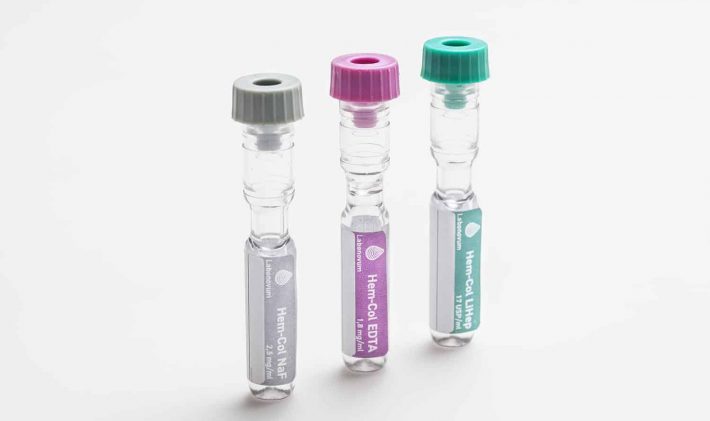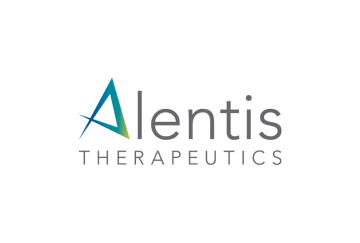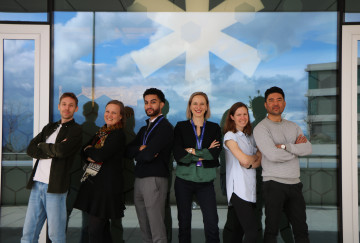Simplifying laboratory analysis for patients
Despite great advancements in clinical analysis laboratory for the past half century, not much has changed for patients – who still have to endure the same procedures to collect blood for analysis. Labonovum has recently been awarded €3 million with the Fast Track to Innovation (FTI) grant, to change the collection of blood.

novum (plural novums or nova)
- A new feature, a novelty.
We visited Dennis Poland, CIO of Labonovum, to hear more about his company’s mission and story.
Dennis Poland is a clinical biochemist and during his 11 years of experience being responsible for a clinical lab, he noticed the hurdles with the current methods of blood collection.
“If you look at the whole process of development in laboratory diagnostics, everything changed. Everything, except for the actual blood collection, which is made in the same way for the last half century. We take several tubes of blood from the vein, which is then placed in a analyser – but the analyser only needs a few drops of blood. This means we are throwing away 95% of the blood, and putting the patient through unnecessary collection.”
A simple mission
Since only a few drops of blood are needed, Dennis came up with the idea to collect blood from a finger stick instead of collecting it from the vein.
“Our mission is to try to develop less invasive collection method, and simplify the whole system. We put the patient in the middle. At this moment healthcare is situated around the healthcare professional. We try to hand that over to the patient, and keep them in the centre of the healthcare process.”
Labonovum was established in 2015, its board consists of medical laboratory professionals, clinical biochemists and microbiologists. They have several products developed towards their mission, and were recently awarded a FTI grant for Ser-Col – a fingerstick blood collection device which separates blood cells from the serum, stabilizing it for analysis independently of storage temperature.
Tests with mouldable plastic, precurssors to Ser-Col.Current Ser-Col device.
Q: Can you tell us about how Labonovum started?
Dennis: “The idea for Ser-Col started in 2012 in the barn in my backyard. I started making some tests with mouldable plastic (protoplast) and the blood of family and friends. After protoplast, the first 3D printers were available so in 4 or 5 years we evolved to the new design”.
Q: How did you obtain funding for going from those prototypes to the first device?
“In the beginning we needed investors to get from the first idea to a device, then after a while non-dilutive funding came into play. After looking into different options with Catalyze, we decided to apply for the FTI. It was great news when we heard we got this grant.”
Q: That must have been a great feeling! The FTI was your first non-dilutive funding application, how was your experience?
“The process was very interesting. The Catalyze consultant made a translation from where this product is now, to where it can go in a few years. It was a good translation. It was very interesting as well because I had not considered completely the ramifications of this project when we started – and then we were suddenly talking about a worldwide product.”
Q: Are there any learnings you would like to share with others who might apply for similar programmes?
“Applicants should know that even with support, it requires their time and input. Even though Catalyze does most of the work, an application is something we have do together. We had to do a lot of research on numbers. Catalyze did a lot of work there as well, but we had to have estimations which are difficult to do.
I learned a lot from this, we are making an application for SME phase 2 and now I have all the documents that we will need. I won’t forget things that I forgot in the last application.”
Q: And now you have already started the project. What steps have you already made?
“The SCAUT project started recently, we did the kick-off meeting in October and we already expanded our staff here at Labonovum Labservices in Limmen. One of our partners Blok System Supply has now also 3 industrial designers who are only working on this project to fully automate the handling of Ser-Col. There are already some very exciting sketches for the new Ser-Col device, that also take into consideration ergonomics. In about 2 months we will validate these new designs, and in 12 months Blok will have the automation machine ready”
Next steps
Besides Ser-Col, Labonovum has created other products that simplify the collection of samples for clinical analysis. Among these, there are urine boxes that not only make the collection easier, but also minimise storage space and plastic waste. However, Dennis tells us that main focus will be on blood collection. This year, they are making an SME Instrument Phase 2 application for their Hem-Col product.
“The SME instrument application will be about Hem-Col, we want to upscale the production and do more R&D to have this worldwide introduces. Some Hem-Col production machines will be made, again with Blok, and we will set-up a cleanroom.”
Awarded grant: Fast Track to Innovation €3 Million
For more information about Labonovum: https://labonovum.nl/



